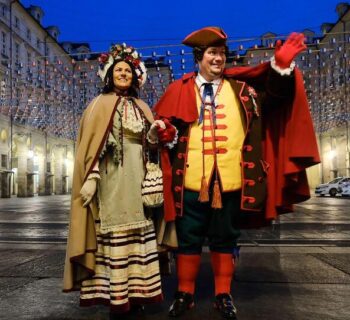Strolling through the streets of Rome, alongside ancient ruins and majestic churches, hides a small statue that has symbolized the voice of the Roman people for centuries: Pasquino. Located at the corner of Piazza Pasquino and Via del Governo Vecchio, near Piazza Navona, this seemingly modest statue holds a fascinating story, filled with satire, courage, and a love for freedom of expression.
But what is Pasquino?
Pasquino is a fragment of a Hellenistic or Roman-era statue, likely representing Menelaus with the body of Patroclus, discovered in 1501 during road works. Instead of being destroyed or forgotten, it was placed on a pedestal and, over time, became a “spokesman” for the citizens. In fact, from the 16th century onwards, Romans began attaching anonymous notes to Pasquino’s neck or arms, called “pasquinades,” containing satirical verses or sharp critiques of papal power, authorities, and the city’s most influential figures.

The phenomenon of the pasquinades spread rapidly, giving rise to a true tradition of “talking statues” in Rome: Madama Lucrezia, Marforio, Abate Luigi, and other stone figures began to “dialogue” with Pasquino, responding with equally ironic verses. These statues became a kind of early social network, where the people, even in a climate of censorship, could express their opinions with wit and irony.
Listen to the ITALIANO ON-AIR podcast episode, which also discusses the history of the Pasquino statue in Rome. Our podcast is designed to help you practice your Italian listening skills, improve your comprehension, and learn new vocabulary and useful expressions through stories, curiosities, and Italian culture.
The name Pasquino seems to derive from a barber or tailor named Pasquino who lived in the area, famous for his sharp tongue and irreverent jokes. When the statue was placed there, the people wanted to keep the tailor’s satirical spirit alive, transferring to stone the criticisms that were once spoken aloud.
On April 25, Rome celebrated the feast of Pasquino, which from 1508 to 1539 enlivened the Parione district with colors, masks, and poetry. On this occasion, students and professors from Sapienza University adorned the famous statue with drapes and garlands, posting epigrams in Latin or vernacular, composed to praise popes and cardinals or to celebrate religious events. These compositions were selected and approved by a “secretary of Pasquino” and read publicly before curious onlookers and scholars. It was a celebration of culture and academic prestige, which transformed the statue into a symbol of erudition and devotion, well before Pasquino became the ironic and satirical spokesperson of the Roman people. Only later did the pasquinades take on satirical and critical tones, often addressing political themes, social injustices, or mocking bureaucracy with the typical biting Roman spirit.
Discover a different Rome
Visiting Pasquino means discovering a corner of Rome that goes beyond grand monuments: here you can feel the voice of the people, a yearning for freedom and justice that has spanned the centuries.

Even today, Pasquino remains a symbol of cultural resistance, creativity, and the irony that characterizes the soul of Rome. For those studying Italian, Pasquino offers an opportunity to deepen not only the language, but also the character of Italians - their ability to laugh even in difficult times, and to use humor as a weapon of defense against injustice.
During your stay in Rome, we recommend stopping by to say hello: pause for a few minutes, observe the pasquinades posted on its pedestal, and let yourself be inspired by the voice of someone who, even though made of stone, still speaks.
Thus, when you pass by Pasquino, you’ll know that you’re not just looking at a broken statue, but at an eternal symbol of freedom, a silent ally for those who want to change things through the power of words.
Want to learn Italian in Rome? Check out our school!
Scuola Leonardo da Vinci Rome
The Eternal City has known it all. Victory and defeat, joy and tragedy, glory and humility marked Rome’s history, culture and architecture. A magical place with vibrant, timeless lifestyle with countless secrets waiting to be discovered.
The Scuola Leonardo da Vinci is situated in the centre of Rome, in the pedestrian area, halfway from the astounding Piazza Navona, Castel S. Angelo and St. Peter Basilica. It is one of the largest schools in Rome.
We, from Leonardo da Vinci School have one mission – to introduce you to this exciting urban symphony. Every year thousand of students from more than 90 countries jump into this adventure hand in hand with us. Leonardo da Vinci School is not only leading language institute, but centre of Italian culture and lifestyle. We match our vast experience with our student’ eagerness to know and learn and together we make it happen.
Latest posts by Scuola Leonardo da Vinci Rome (see all)
- What to Do in Rome During Christmas - December 22, 2025
- Living and learning Italian in Rome: the guide for international students - September 26, 2025
- ROME: DISCOVERING THE MAXXI - August 5, 2025









